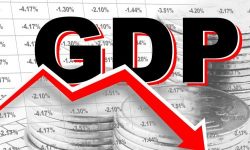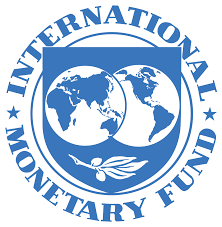 By Nageshwar Patnaik in Bhubaneswar, January 14: 2024 turns out to be a special year with around half of the people in the world from at least 64 countries set to elect the new governments across the globe. Interestingly, more voters than ever in history will head to the polls the results of which, for many, will prove consequential for years to come.
By Nageshwar Patnaik in Bhubaneswar, January 14: 2024 turns out to be a special year with around half of the people in the world from at least 64 countries set to elect the new governments across the globe. Interestingly, more voters than ever in history will head to the polls the results of which, for many, will prove consequential for years to come.
There is a general consensus that the election period witnesses a slowdown in economic activity in almost all countries. Uncertainty is identified as a key variable that affect the economic indicators and lead to the economic slowdown through different channels. The election uncertainty affecting economic outcomes has implications beyond electoral cycles. Associated political uncertainty induces a decline in private fixed investment; and the impact is greater in countries with lower level of democratic consolidation.
As the world nears the midpoint of what was intended to be a transformative decade for development, the global economy is set to rack up a sorry record by the end of 2024 – the slowest half-decade of GDP growth in 30 years, according to the World Bank’s latest Global Economic Prospects report. By the end of 2024, people in about one out of every four developing countries and about 40% of low-income countries will still be poorer than they were on the eve of the COVID pandemic in 2019. In advanced economies, meanwhile, growth is set to slow to 1.2% this year from 1.5% in 2023.
However, there is a definite air of optimism in India as almost every economic parameter looks better than last year. The economy is on a take-off mode in 2024, in the absence of any external or weather shock. Even if there is any external shock, the Indian economy has done well in the last two years and was buffered against two wars through the adept use of policy tools.
 The year 2023 began with Q4 Gross Domestic Product (GDP) growing at 6.1 percent, Q1 of FY24 recording GDP at 7.8 percent, and Q2 of the current fiscal posting GDP growth at 7.6 percent sequentially showing its resilience and continuity of good growth. (GDP) growth is likely to be closer to 7%, after the 6.5-7% growth recorded for FY24. The conditions for sustained growth are in place.
The year 2023 began with Q4 Gross Domestic Product (GDP) growing at 6.1 percent, Q1 of FY24 recording GDP at 7.8 percent, and Q2 of the current fiscal posting GDP growth at 7.6 percent sequentially showing its resilience and continuity of good growth. (GDP) growth is likely to be closer to 7%, after the 6.5-7% growth recorded for FY24. The conditions for sustained growth are in place.
Economic activity exhibited buoyancy in Q2 aided by strong domestic demand. GDP in Q2 was largely driven by investment and government consumption. Turning to Q3, two-thirds of Rabi sowing has been completed despite the late harvest of Kharif crops in some states. The manufacturing sector gained strength with easing input cost pressures and pick-up in demand conditions.
Eight core industries recorded healthy growth in October and continued the rising trend since June this year. They grew by 8.4 percent in June; 8.5 percent in July; 12.5 percent in August; 9.2 percent in September; and 12.1 percent in October. The purchasing managers’ index (PMI) for manufacturing rose in November. The services sector buoyancy has remained intact as reflected in high-frequency indicators. GST collections at Rs.1.68 lakh crore in November 2023 were buoyant. Services PMI displayed healthy expansion in November.
The total flow of resources to the commercial sector from banks and other sources at Rs. 17.6 lakh crore during the current financial year so far is significantly higher than that of last year’s Rs. 14.5 lakh crore. Looking at all these factors, real GDP growth for 2023-24 was raised by RBI to 7.0 percent, up from 6.5 percent projected earlier.
Amid the optimism of RBI on GDP growth, the government has flagged that recession risks may reappear in 2024 mainly due to current uncertainties linked to rising food and energy prices amidst lingering geopolitical tensions. The upside risks to inflation have put RBI on high alert and even monitoring of foreign portfolio investments (FPIs) needs constant monitoring that could destabilize exchange rate management and could pose risks of current account deficit. The present Forex reserve at US $ 615 billion augurs well for the exchange rate stability.
The inflation oscillated below and beyond the upper end of the target of 6 percent fixed under the flexible inflation targeting (FIT) framework. The food and fuel inflation was the major contributor to the spike in inflation. RBI is well focused on reaching the 4 percent midpoint target of the glide path of inflation of 4 percent +/- 2 percent.
 However, the IMF in a recent report warned that India’s general government debt may exceed 100% of GDP in the medium term, stating that long-term risks are high because the country needs considerable investment to improve resilience to climate stresses and natural disasters. This suggests that new and preferably concessional sources of financing are needed, as well as greater private-sector investment and carbon pricing or equivalent mechanisms.
However, the IMF in a recent report warned that India’s general government debt may exceed 100% of GDP in the medium term, stating that long-term risks are high because the country needs considerable investment to improve resilience to climate stresses and natural disasters. This suggests that new and preferably concessional sources of financing are needed, as well as greater private-sector investment and carbon pricing or equivalent mechanisms.
Given it, the government emphasized a decline in general government debt from around 88 percent in FY21 to approximately 81 percent in 2022-23. It affirmed its commitment to achieving fiscal consolidation targets, aiming to reduce fiscal deficit below 4.5 percent of GDP by FY26.
The focus in 2024 thus will be to curtail the fiscal deficit. With general elections in 2024, the uncertainties will persist. Despite the challenges of spillover risks, the Indian economy is all set to grow at 7 percent in FY24 and at 6.5 percent in FY25. 2024 promises better economic tidings and more stability. This chain will also help to create more jobs, which has been the Achilles heel when it comes to consumption.
If India manages to cross the 7% level this year, at a time when the global economy takes a breather, the country can be well set to move down the 8% path that will help accelerate the process of moving towards the $5 trillion economy.


Leave a Reply
Be the First to Comment!